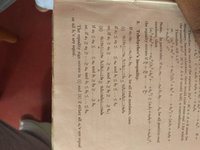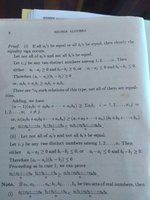You are using an out of date browser. It may not display this or other websites correctly.
You should upgrade or use an alternative browser.
You should upgrade or use an alternative browser.
Tchebychev's inequality
- Thread starter chandra21
- Start date
mmm4444bot
Super Moderator
- Joined
- Oct 6, 2005
- Messages
- 10,958
The op looks like an Easter Egg Hunt.
I found the step! For readers, it's located about halfway down the page in the proof (See 2nd attachment: Page 8, HIGHER ALGEBRA).
@chandra21 ? The forum has a Preview button, for double-checking posts before submitting them. Cheers
\(\;\)
I found the step! For readers, it's located about halfway down the page in the proof (See 2nd attachment: Page 8, HIGHER ALGEBRA).
@chandra21 ? The forum has a Preview button, for double-checking posts before submitting them. Cheers
\(\;\)
chandra21
Junior Member
- Joined
- May 23, 2013
- Messages
- 66
There is a typing mistake... I cant make out that stepThe op looks like an Easter Egg Hunt.
I found the step! For readers, it's located about halfway down the page in the proof (See 2nd attachment: Page 8, HIGHER ALGEBRA).
@chandra21? The forum has a Preview button, for double-checking posts before submitting them. Cheers
\(\;\)
chandra21
Junior Member
- Joined
- May 23, 2013
- Messages
- 66
Ok next time i will do that |
Dr.Peterson
Elite Member
- Joined
- Nov 12, 2017
- Messages
- 16,873
I think you are asking how they get that line from what is given above it.I can't [?] make out the step
" Adding , we have
(n-1).....
Please explain
As they say, they are adding together all possible inequalities of the form [MATH]a_i b_i + a_j b_j \ge a_i b_j + a_j b_i[/MATH] with [MATH]i\ne j[/MATH], and the inequality stated follows. On the LHS, each product [MATH]a_i b_i[/MATH] appears n-1 times (because any i is paired with each of the other n-1 j's), so they can factor that out. On the RHS, each product [MATH]a_i b_j[/MATH] appears once, so it is just a sum of those.
Is there a particular part of that that you don't understand?
chandra21
Junior Member
- Joined
- May 23, 2013
- Messages
- 66
No no... I understand now.. thanks.I think you are asking how they get that line from what is given above it.
As they say, they are adding together all possible inequalities of the form [MATH]a_i b_i + a_j b_j \ge a_i b_j + a_j b_i[/MATH] with [MATH]i\ne j[/MATH], and the inequality stated follows. On the LHS, each product [MATH]a_i b_i[/MATH] appears n-1 times (because any i is paired with each of the other n-1 j's), so they can factor that out. On the RHS, each product [MATH]a_i b_j[/MATH] appears once, so it is just a sum of those.
Is there a particular part of that that you don't understand?


